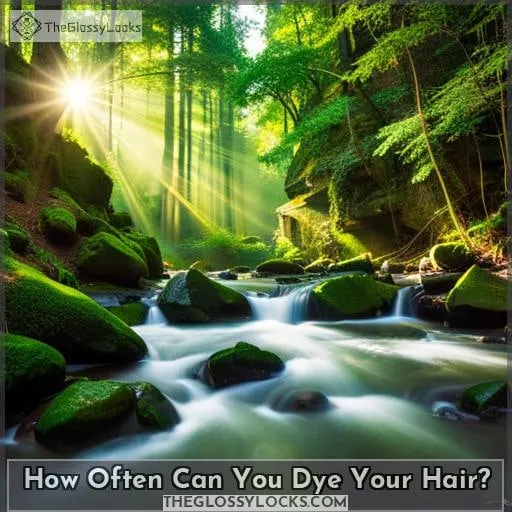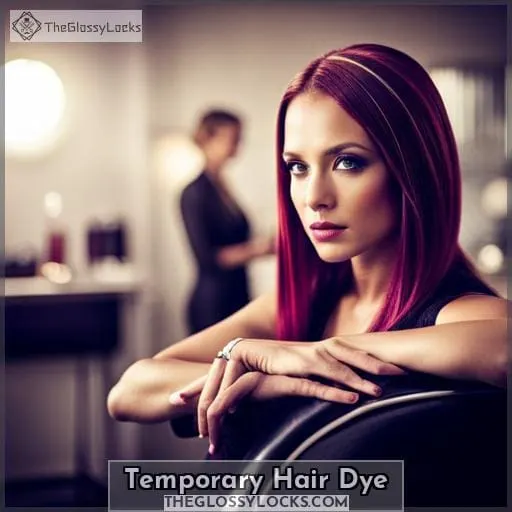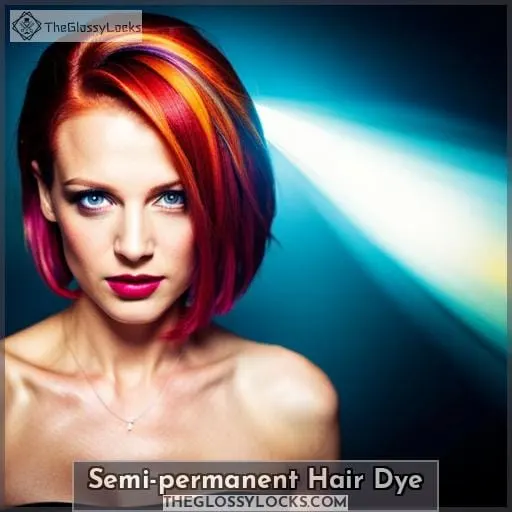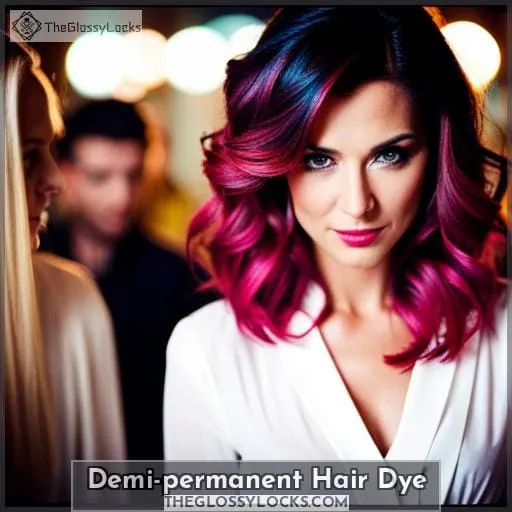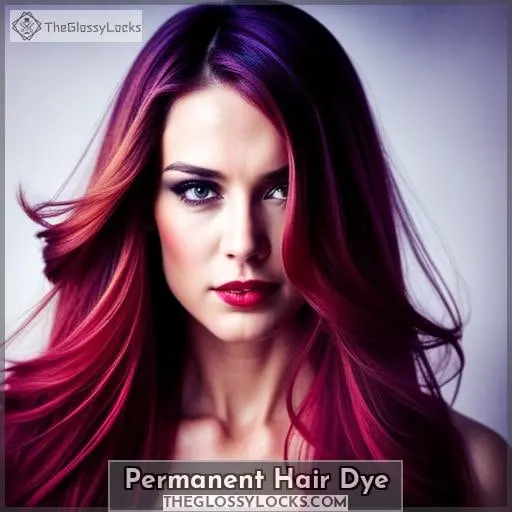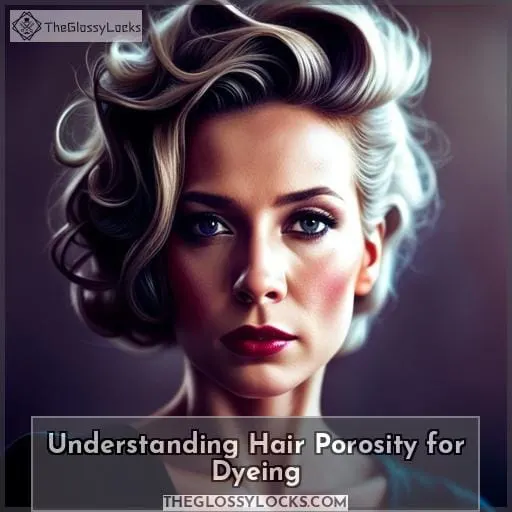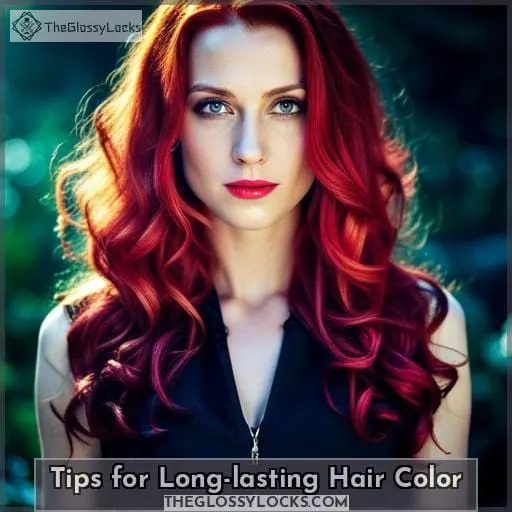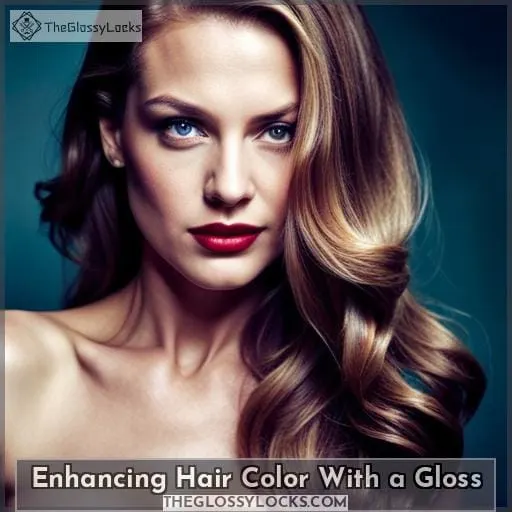This site is supported by our readers. We may earn a commission, at no cost to you, if you purchase through links.
 Between the idea of transforming your hair into a new hue and being able to make an instant statement, it’s no wonder why so many people are drawn to the art of hair dyeing. But if you’re wondering how often should you dye your hair for healthy strands, then look no further.
Between the idea of transforming your hair into a new hue and being able to make an instant statement, it’s no wonder why so many people are drawn to the art of hair dyeing. But if you’re wondering how often should you dye your hair for healthy strands, then look no further.
Let us explore this complex process together and discover tips that will help maintain vibrant color for as long as possible.
From Gigi Hadid’s redhead debut at the 2021 Met Gala to Billie Eilish’s iconic green roots—it’s clear that switching up one’s look is both daringly stylish yet requires some knowledge on caring for our locks in between each coloring session or root touch-up kit application.
Table Of Contents
- Key Takeaways
- The Hair Dyeing Process: What It Does to Your Strands
- How Often Can You Dye Your Hair?
- How to Maintain Your New Color and Overall Hair Health
- Temporary Hair Dye
- Semi-permanent Hair Dye
- Demi-permanent Hair Dye
- Permanent Hair Dye
- Understanding Hair Porosity for Dyeing
- Tips for Long-lasting Hair Color
- Enhancing Hair Color With a Gloss
- Conclusion
Key Takeaways
- Frequent dyeing can lead to dryness, brittleness, and breakage.
- The frequency of dye touch-ups depends on the type of dye used, ranging from every 2 to 10 weeks.
- Consider your hair’s porosity to balance color vibrancy with hair health.
- Nourishing and maintaining colored hair is essential through deep conditioning and the use of color-safe products.
The Hair Dyeing Process: What It Does to Your Strands
You’ve gotta consider how each gloss, rinse, and touch-up seeps into your locks, shifting those strands with every re-do.
The dyeing process penetrates the hair cuticle and cortex, forcing open bonds to deposit color. This can damage hair over time, causing dryness, brittleness, and breakage. Frequent dyeing exacerbates these issues.
Gloss treatments with oils nourish overly processed strands between colorings. They limit damage by avoiding bleach and developer while refreshing your hue. Understanding your hair’s porosity also helps balance the need for vibrancy with hair health.
Those with dry, porous hair should space out dyeing sessions while utilizing gentle glosses. For longevity with minimal sacrifice to your strands, maintain color with occasional gloss and customized hair care.
How Often Can You Dye Your Hair?
The frequency of your hair color touch-ups depends on various factors, including the type of dye used and the condition of your hair.
- Permanent dye: every 4 to 6 weeks
- Demi-permanent dye: 6 to 8 weeks
- Semi-permanent dye: 2 to 4 weeks
- Temporary dye: as desired
- Bleaching treatments: 8 to 10 weeks
How often you should dye your hair also depends on your original hair color and how quickly your roots grow in. To maintain vibrancy and hair health, it is recommended to touch up your permanent color every 4 to 6 weeks.
Demi-permanent dyes usually last 4 to 8 weeks between applications. For semi-permanent options, plan to reapply the color every 2 to 4 weeks. Temporary dyes are gentle enough for daily use. It is best to wait at least 8 weeks between bleaching or highlighting sessions.
Following your colorist’s recommendations ensures that your hair stays healthy while looking its best.
How to Maintain Your New Color and Overall Hair Health
When dyeing hair, proper conditioning is crucial for maintaining your new color and overall hair health, since color stripping and dryness are big risks. Always use a heat protectant when heat styling to prevent damage to already compromised strands.
Conditioning Importance
Coloring can really dry hair out, so nourish those strands with a rejuvenating deep conditioner every week, girl. Using a deep conditioner like Olaplex No. 8 weekly helps revive your hair’s internal structure.
Look for one with nourishing oils to hydrate each strand from the inside out. This restores softness and shine to your newly colored tresses.
Don’t just coat that freshly dyed hair with conditioner either – leave it on under a shower cap for at least 10 minutes so the conditioning ingredients can really penetrate for improvement underneath.
Following deep conditioning with a leave-in for extra hydration seals the deal for healthy, vibrant color.
Heat Protection
If you spray heat protectant, you’ll shield your dyed hair from damage. Invest in a nourishing formula to nurture dyed locks. Examples include Olaplex’s No.6 Bond Smoother, which repairs bonds broken by coloring.
Also, consider Living Proof’s Restore Instant Protection to prime hair and prevent damage. Finally, Kevin Murphy’s Young Again Oil benefits all hair types. Consult your stylist for the ideal protectant for your hair’s porosity and texture.
Temporary Hair Dye
You’d like – and your hair will thank you – for using a temporary color weekly since it’s kinder than other dye types. Temporary hair dyes are great for trying out a new color without commitment. They coat the hair shaft so the color washes out in one shampoo, avoiding damage from chemicals that can dry out your strands.
With temporary hair dye, you can change your color as often as you want without worries about regrowth. While the color payoff may not be as vibrant, it gently deposits pigment for a subtle tint. Focus the dye on the most visible sections around your face for a quick refresh.
Use a tinted dry shampoo to preserve the temporary color for an extra day or two.
Experiment with fun shades as much as you want with these safe dyes that won’t compromise your hair’s health.
Semi-permanent Hair Dye
Reapply semi-permanent dye every 3-6 weeks for optimal color longevity and vibrancy. Unlike temporary dyes, semi-permanent formulas penetrate the hair’s cuticle and last through several shampoos – typically 3 to 6 washes depending on your hair type.
To keep your new color fresh, aim for touch-ups every 3 to 4 weeks if you wash your hair frequently.
To extend time between applications, use color-safe shampoo and conditioner to lock in semi-permanent color. With each reapplication, you can refresh your shade or experiment with fun new hues. Just keep in mind lighter semi-permanent colors tend to fade faster on porous hair.
When reapplying dye, focus on the regrowth area first. Then take the remainder through the mid-shafts and ends as needed to revitalize faded color.
Demi-permanent Hair Dye
Transitioning from semi-permanent shades, let’s explore demi-permanent hair dye. This longer-lasting option deposits color that penetrates the cortex for up to 20 washes.
- Increased dye longevity compared to semi-permanent shades. You can expect the color to last around 4-5 weeks.
- Better gray coverage due to deeper cortex penetration. Grays blend beautifully into your natural color.
- Ammonia-free formulas that are gentler on hair. Many contain nourishing ingredients like keratin or argan oil.
- More predictable results since they don’t wash out quickly. You’ll enjoy beautiful, even color that fades gradually.
With demi-permanent dyes, focusing on choosing a shade that flatters your complexion’s wise. Consider your hair porosity too; high porosity hair may require more frequent glossing treatments to maintain color vibrancy between dye applications.
Overall, demi-permanent dyes let you refresh your look with longer-lasting color and less damage.
Permanent Hair Dye
With permanent hair dye, you gotta strike a balance between gettin’ that vibrant color and keepin’ your locks healthy.
Permanent dyes penetrate deep into your hair shaft and alter your natural pigment, so the color lasts 4-6 weeks between touch-ups. But be strategic with permanent dye – goin’ too light too fast damages hair. When choosin’ permanent color, opt for a shade close to your natural base and use a demi-permanent gloss in between for upkeep.
Daily gentle shampooing and weekly deep conditioning helps maintain dye and hair health.
Ultimately, permanent dye lets you change your look dramatically but requires more maintenance. Consult the pros to find your perfect permanent shade and a routine to keep your color poppin’ and your hair happy.
Understanding Hair Porosity for Dyeing
You’ll find low-porosity hair needs longer dye times and high volume developer for maximum color deposit.
There are three main porosity types: low, normal, and high. Low porosity hair has tight cuticles that resist accepting color.
High porosity hair readily soaks up color but it fades quickly. Those with high porosity hair may require more frequent touch-ups. For hair health, avoid over-processing high porosity hair. Look for color-revitalizing products to boost color between salon visits.
Understanding your hair’s porosity enables selecting optimal dyes and developers for maximum color vibrancy and longevity. This knowledge supports maintaining healthy hair and avoiding damage from over-processing.
Tips for Long-lasting Hair Color
When it comes to maintaining vibrant, long-lasting hair color, there are several tips and tricks you can utilize. Moderation is key – avoid over-processing your hair by allowing 4-6 weeks between color applications and 8-10 weeks between bleaching sessions.
Additionally, incorporate color-depositing shampoos and conditioners into your routine and use lower heat styling to lock in color.
Avoid Over-shampooing
Shampoo less to prolong your color’s vibrancy. Gloss benefits: a glossy finish, toning blonde hair, and reviving faded colors. Shampoo techniques: use gentle sulfate-free shampoos; co-washing for a less drying option; weekly scalp scrubs with salt or apple cider vinegar.
Color maintenance: use color-safe products; custom haircare for protection against fading; professional consultation if needed between salon appointments and bleach treatments every 8–10 weeks.
Incorporate Scalp Scrubs
Gently massage a scalp scrub with salt or apple cider vinegar into your hairline weekly for a healthy scalp. Massage the exfoliant into problem areas to lift dirt, oil, and residue buildup, focusing on the hairline and crown where it accumulates most.
Do not aggressively over-scrub, as this can cause hair breakage. After massaging for 3-5 minutes, rinse thoroughly. Look for nourishing ingredients like apple cider vinegar, sea salt, coconut oil, aloe vera, and essential oils in scalp scrubs.
Enhancing Hair Color With a Gloss
Try this color-boosting gloss to invigorate dyed hair and keep the color vibrant between salon visits. Unlike permanent dye, gloss coats strands to refresh color and shine without commitment.
The translucent formula deposits pigment into damaged areas and faded dye. Glossing prevents brassiness in highlighted hair and grays.
For maximum color revitalization, apply sparingly to towel-dried hair. Massage in and leave on 10 minutes before rinsing.
Reapply every 2-3 weeks to boost color. Unlike permanent dye, gloss won’t damage or alter natural color.
The nourishing weekly treatment will keep hair healthy and color fresh.
Conclusion
It’s pivotal to prioritize the health of your strands when choosing how often to dye your hair. While style transformations can feel exciting, moderation, aftercare, and professional guidance are key for minimizing damage.
Focus on enhancing your natural color subtly, conditioning diligently, and expanding the time between chemical processes. With some patience and TLC, you can achieve gorgeous hues without compromise. How often should you dye your hair? As little as your strands need to stay strong and vibrant.


